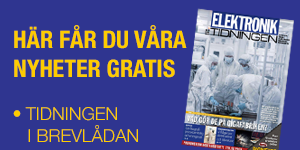Among other things, the Chalmers team is creating bio electronic interfaces to make possible massive parallel communication based on the exchange of electrons, photons and chemical signals on modified surfaces such as silicon.
The team, which is at the forefront of research in this field, has had articles published in both Nature and Science. In Nature the researchers describe a complex two-dimensional neural network. This is made up of biological molecules which can be used to study chemical reactions. By placing this network on silicon, the aim is to control transport between the molecules with electric impulses, and to use living cells in true neural networks. However, as PhD student Cecilia Farre admits to Elektroniktidningen, the researchers are not yet quite sure how to put it all together.
Gittan Cedervall






































